As we all know, in recent years, IoT (Internet of Things) devices have gradually become a hot topic, aimed at improving people’s lives. So what changes can these IoT devices really bring to our lives? Our AnTuTu testing lab aims to bring you a series of evaluations on IoT devices, starting with smart speakers.We know that smart speakers will become the gateway to other IoT devices in the future, serving as the ears and hands of users, highlighting their importance.
The introduction of smart speakers allows for a tangible sense of convenience. For example, if you are carrying something home and can’t reach the light switch, just call out, and the smart speaker can turn on the living room light; when it’s too cold to get out of bed to turn off the light, just call out again, and the smart speaker can turn it off for you.Control of other smart devices is just the tip of the iceberg; more features like information queries, alarm wake-ups, and even entertaining children are the main roles in its daily functions.
While we all see this as the future direction, the quality and reliability of smart speakers currently available on the market vary significantly. Some even fail to understand basic voice commands, which is why we are conducting this evaluation: to identify the best products available at this stage and truly see their value.
We purchased all the smart speakers for this evaluation at our own expense. They include Baidu’s Xiaodu Home 1S (299 yuan), Xiaodu Smart Speaker 1S (159 yuan); Xiaomi’s Xiao Ai Touchscreen Speaker (199 yuan), Xiaomi AI Speaker (199 yuan); Alibaba’s Tmall Genie R1 Cookie (249 yuan), Tmall Genie Sugar R (79 yuan); Huawei AI Speaker (299 yuan).
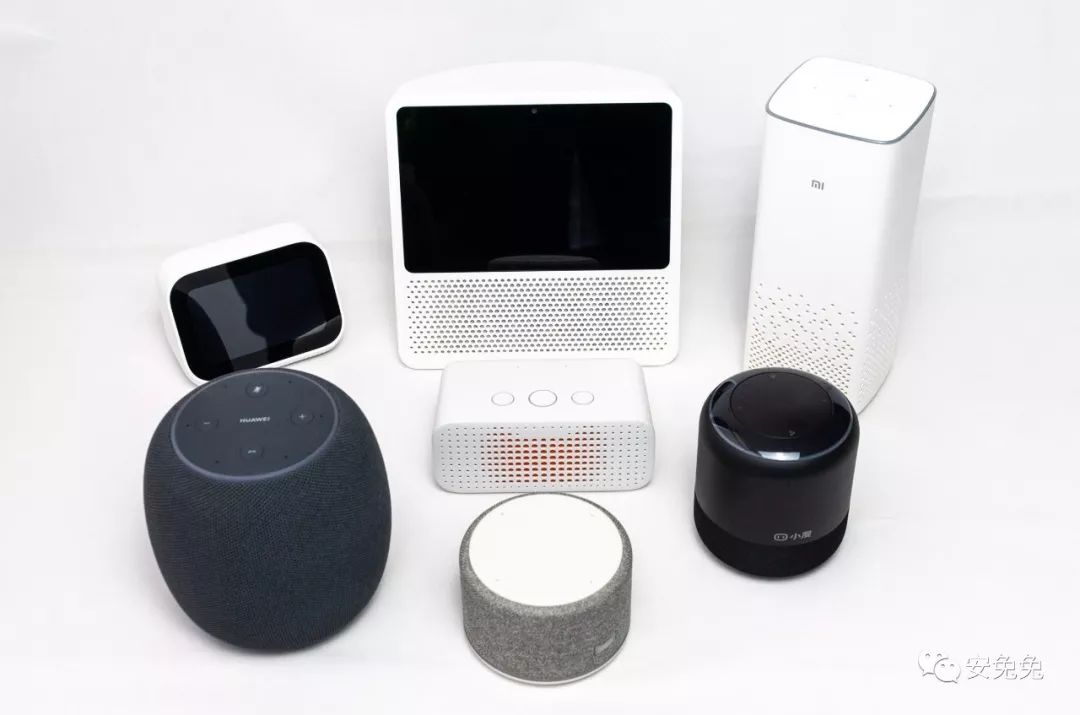
In the first evaluation of the 7 speakers, we selected them based on sales ranking, meaning these models are among the best sellers. Additionally, we found that bestselling products generally do not exceed 300 yuan, indicating that price is one of the main factors influencing consumer purchases of these products.
Next, let’s discuss them in detail.
1. Speaker Appearance Comparison
This feature can be roughly divided into two categories: those with screens and those without. Xiaodu Home 1S and Xiao Ai Touchscreen Speaker are products with screens, while the other five are traditional models without screens.
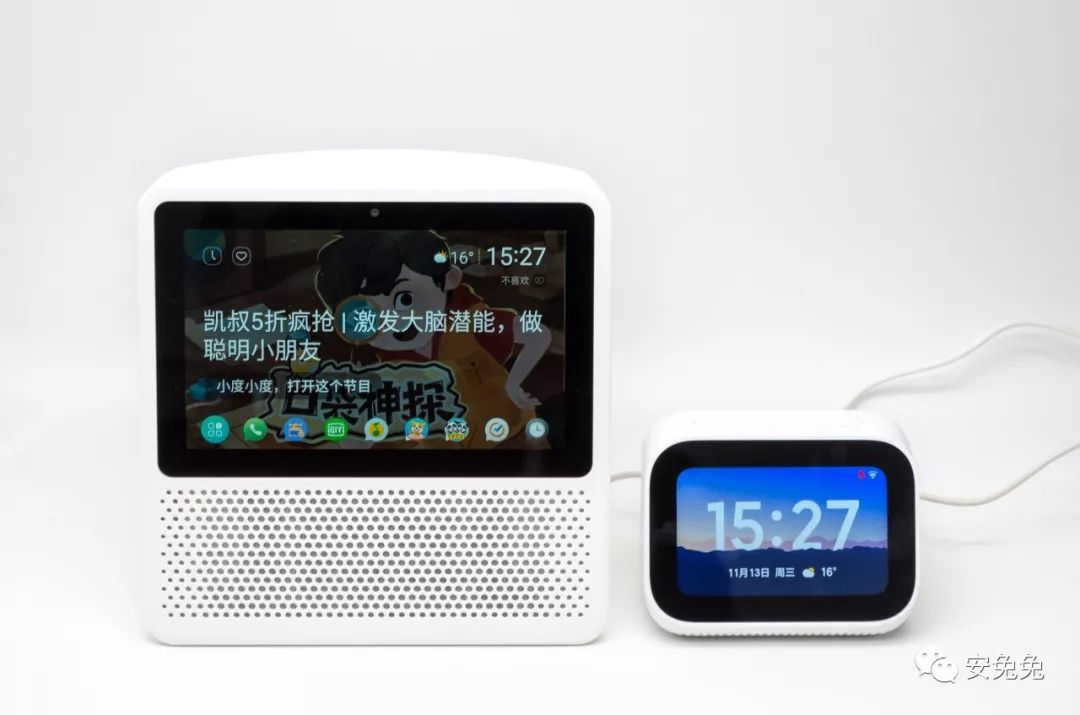
Left: Xiaodu Home 1S Right: Xiao Ai Touchscreen Speaker
Xiaodu Home 1S and Xiao Ai Touchscreen Speaker have 7-inch and 4-inch screens respectively. Unlike traditional smart speakers, smart speakers with screens operate more like a smartphone on display. Once you connect the corresponding app to the speaker, it can function like a smart device.
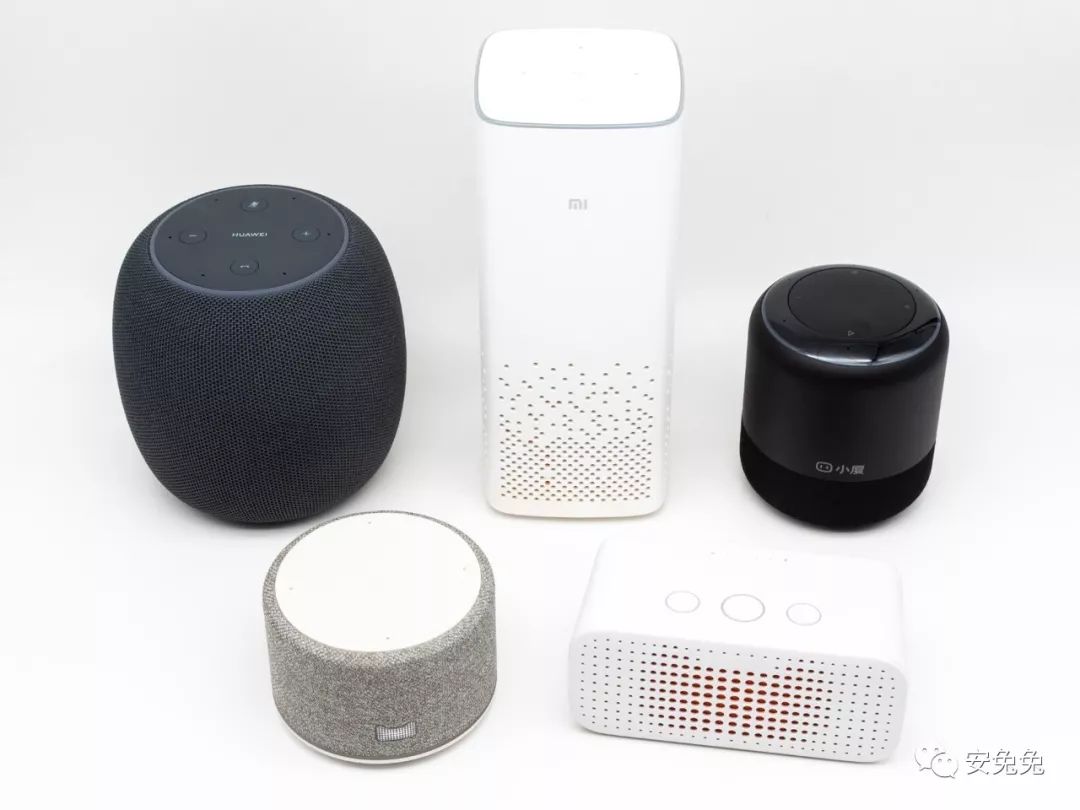
From left to right, the products are: Huawei AI Speaker, Xiaomi AI Speaker, Xiaodu Smart Speaker 1S, Tmall Genie R1 Cookie, Tmall Genie Sugar R
The remaining products without screens can be categorized by size, with Xiaomi AI Speaker and Huawei AI Speaker being the largest (the size of the speaker is crucial for sound quality). The former has a vertical design, while the latter is round, both capable of 360° sound pickup and playback. However, Huawei AI Speaker features joint tuning with Dynaudio, enhancing sound experience.
The other two Tmall Genie products and Xiaodu Smart Speaker have a more ordinary appearance and are compact, taking up less space.
Since appearance is subjective, our ranking here is based solely on our observations and experiences.
Appearance Score Summary:

For usage, all 7 speakers require downloading the corresponding app on a smartphone, connecting to the speaker, and configuring the network before they can be used as smart speakers.
The good news is that although each speaker model is different, as long as they are produced by the same brand, one app can connect multiple speakers simultaneously, eliminating the need to download multiple apps.
1) Baidu Smart Speaker Products:
Baidu’s two products use the app “Xiaodu” for smart speakers.
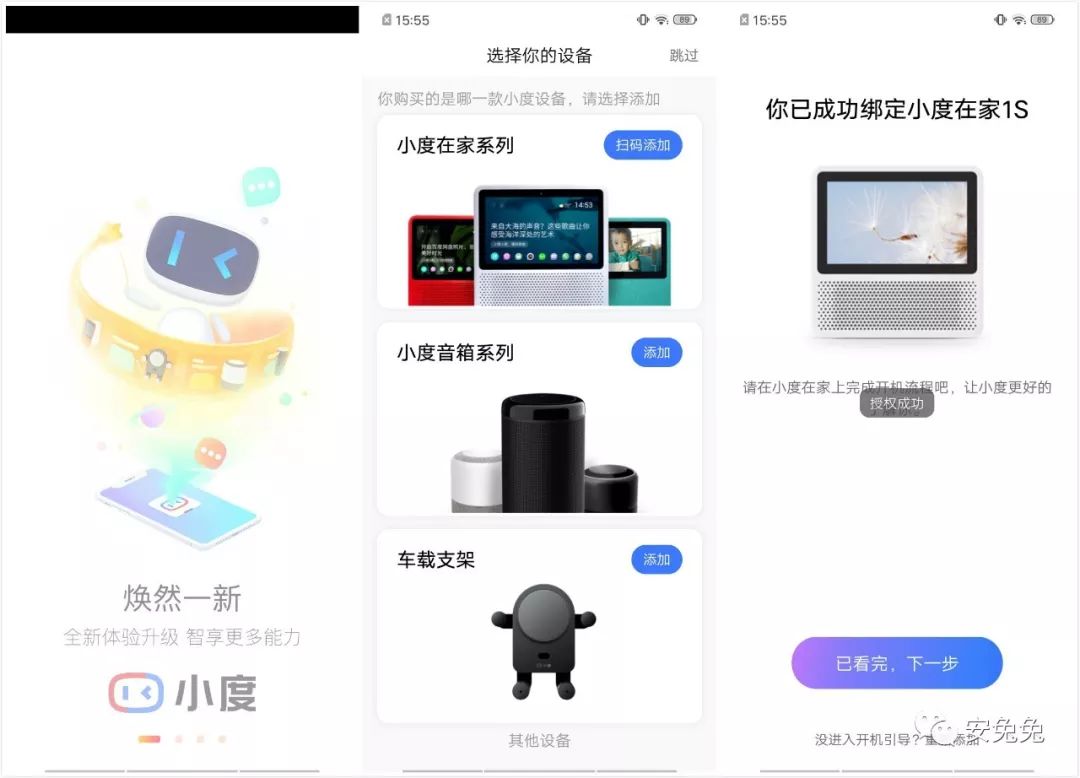
After downloading and installing, the phone and speaker need to be connected to the same WiFi. It is important to note that all seven smart speakers do not support 5G WiFi; your phone must switch to 2.4G WiFi to connect.
The pairing and connection process is very smooth, following the prompts in the app step by step.
Baidu’s smart speaker app has a distinct “Baidu” flavor, notably featuring many ads.
The bottom tab bar is divided into 5 sections: Home, Skills, VIP, Store, and My. Among them, VIP and Store serve as blatant advertising channels, displaying ads from any Baidu product you encounter, with a focus on video subscriptions, audio payments, smart hardware, and membership purchases. Regardless, it often feels like they are “reaching out for money”. For ordinary users, these ads or soft ads could lead to a decline in user experience.
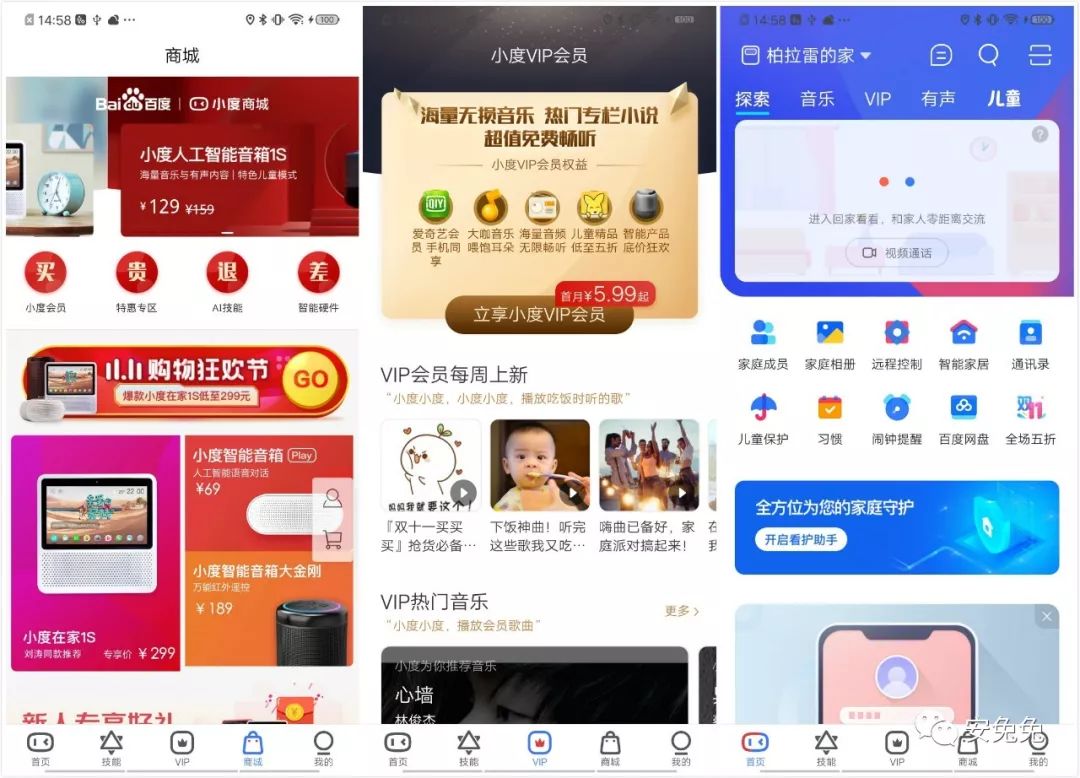
Baidu smart speaker’s wake word is “Xiaodu Xiaodu”, and tests show that its sensitivity and reception range are high. However, we found that the screen-equipped Xiaodu Home 1S is less sensitive than the non-screen Xiaodu Smart Speaker 1S.
Xiaodu Home 1S features a 7-inch screen, which is always appealing. However, due to hardware configuration issues, one common problem is that the touchscreen becomes unresponsive. When you try to click on iQIYI, you can clearly see the progress bar moving, but it fails to enter iQIYI, often remaining stuck on the main interface, which is disappointing.
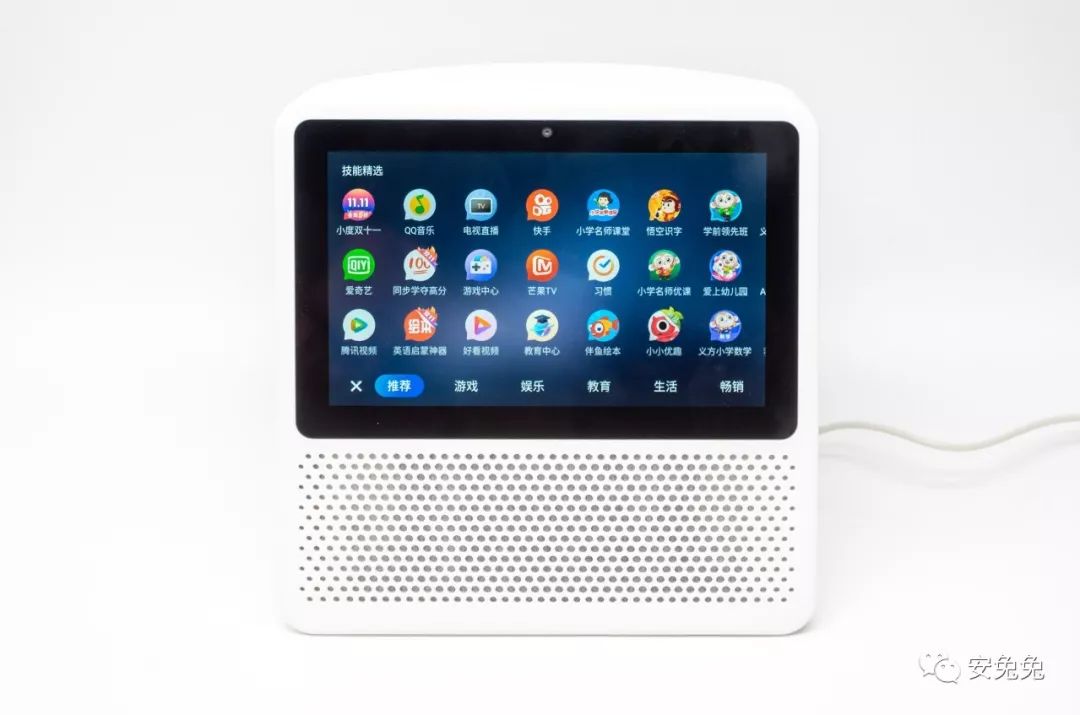
This issue is not limited to user interaction; it also occurs during voice control. The screen on Xiaodu 1S will display the process of converting your voice to text, but often you will only see a progress bar, which takes a while to return to normal.
This situation is truly perplexing. If it is due to hardware limitations (given the low price, you can’t find another smart device with such a large screen), it fails to understand your voice commands while still being able to play various videos and ads on standby. Imagine buying a smart speaker that only works for ads; it could drive you crazy.
If you think that the non-screen Xiaodu Smart Speaker 1S would perform better, our experience suggests otherwise. When I asked it to play a song, it unexpectedly started with a random ad before playing the song, which was incredibly frustrating.
2) Xiaomi Smart Speaker Products
Xiaomi’s two smart speakers connect through the app “Xiao Ai Speaker”.
Similar to Baidu’s products, once connected successfully, you can use Xiaomi AI Speaker and Xiao Ai Touchscreen Speaker.
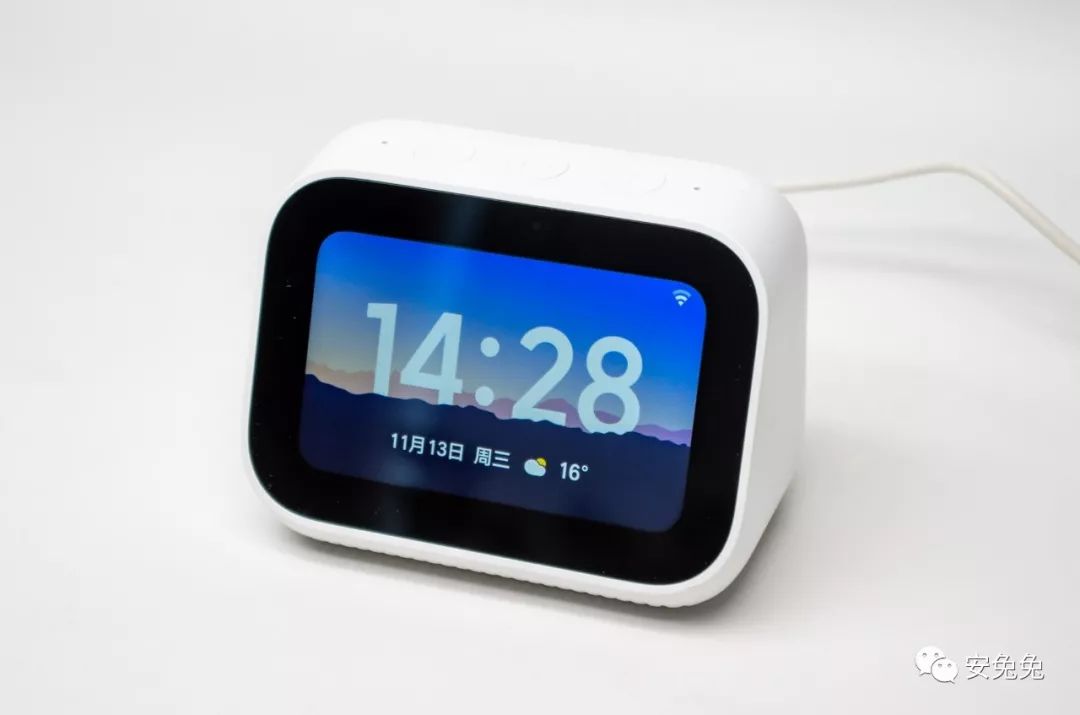
Compared to Baidu’s app, Xiaomi’s version is much simpler, and you won’t see any obvious ads.
The Xiao Ai Speaker app consists of Home, Smart Home, Skills Center, and My pages, focusing on functionality and guidance. For someone unfamiliar with smart speakers, this app is quite suitable.
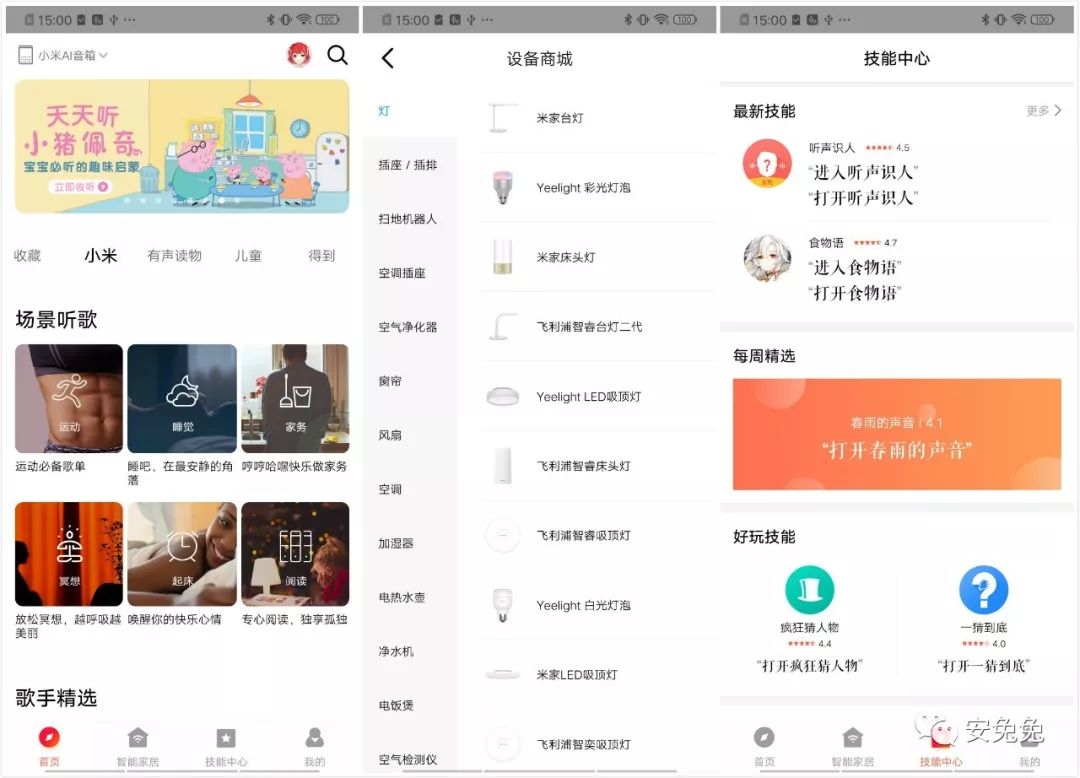
The app’s standout feature is Xiaomi’s Smart Home Center. Xiaomi is one of the earliest companies to develop IoT devices in China, and over the years, their product range has become well-known. Whether it’s their own products or those integrated with Xiaomi’s ecosystem, they can be seamlessly controlled by Xiao Ai speakers, which is one of Xiaomi’s strongest points.
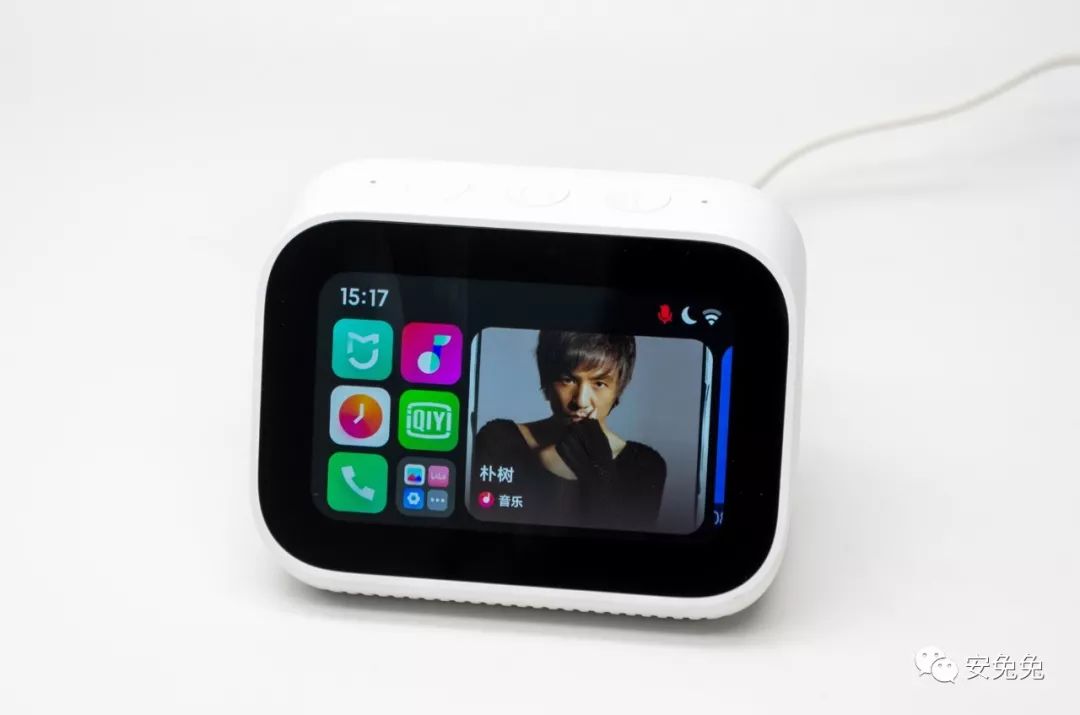
The wake word for Xiaomi’s smart speaker is “Xiao Ai”, and the recognition rate is very high, able to respond to both loud and soft calls. However, it seems a bit too sensitive; user feedback suggests that it can be activated even without saying the full phrase “Xiao Ai”. As long as the initials match “XATX”, it can be triggered, such as saying “Xiao Ao Tian Xia” or “Xi’an Tong Xiang”. However, the recognition rate is lower than when directly calling “Xiao Ai”, but there is still a possibility of activation. Other brand speakers also have similar activation potential with homophones.
In terms of interaction, Xiao Ai has evolved more than other smart speakers. The 3.0 version of Xiao Ai supports continuous dialogue (full duplex), allowing users to converse without reactivating the speaker for each command, reducing the number of voice commands and making it more akin to human conversation.
In contrast, other brands require reactivation for every command, making them seem less responsive.
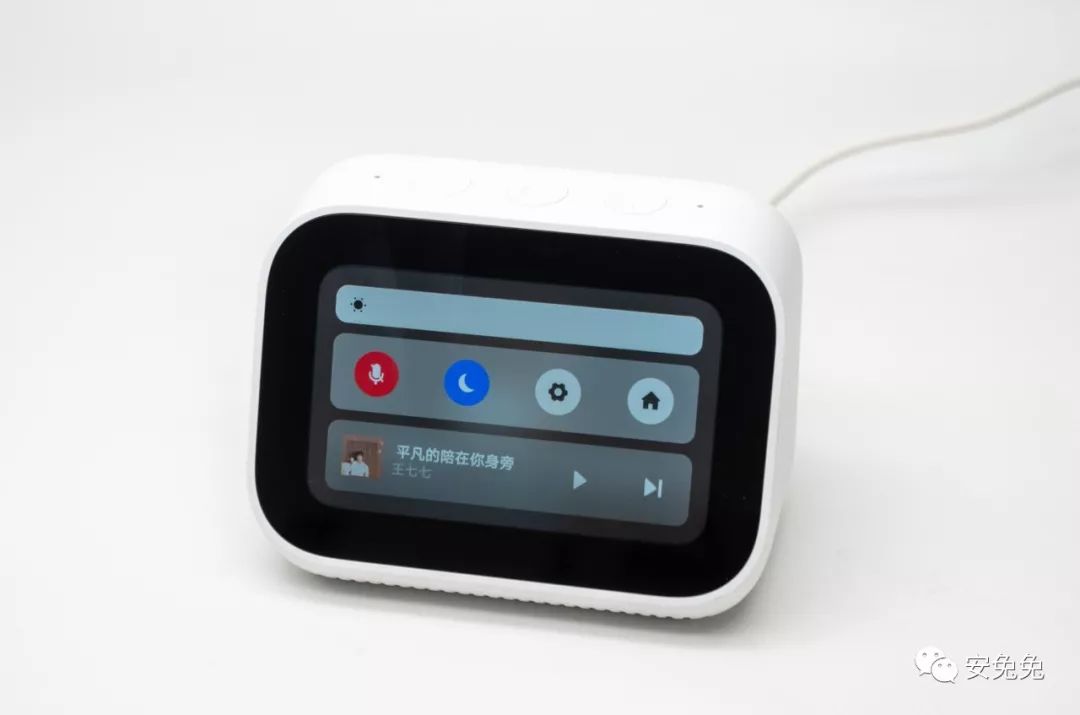
Xiao Ai Touchscreen Speaker is particularly noteworthy for having its own operational logic system, which is clean and simple. The customizable settings are high, displaying only specific wallpapers and time/weather information in standby mode, without cycling through news and promotional ads, making it visually much more appealing than the similarly equipped Xiaodu Home 1S.
3) Alibaba Smart Speaker Products
The two Tmall Genie smart speakers use the app “Tmall Genie”, and the wake word is also “Tmall Genie”.
This app aligns closely with Tmall’s brand character, focusing heavily on shopping. If you open the app without the name “Tmall Genie”, you might think you opened the Taobao/Tmall client.
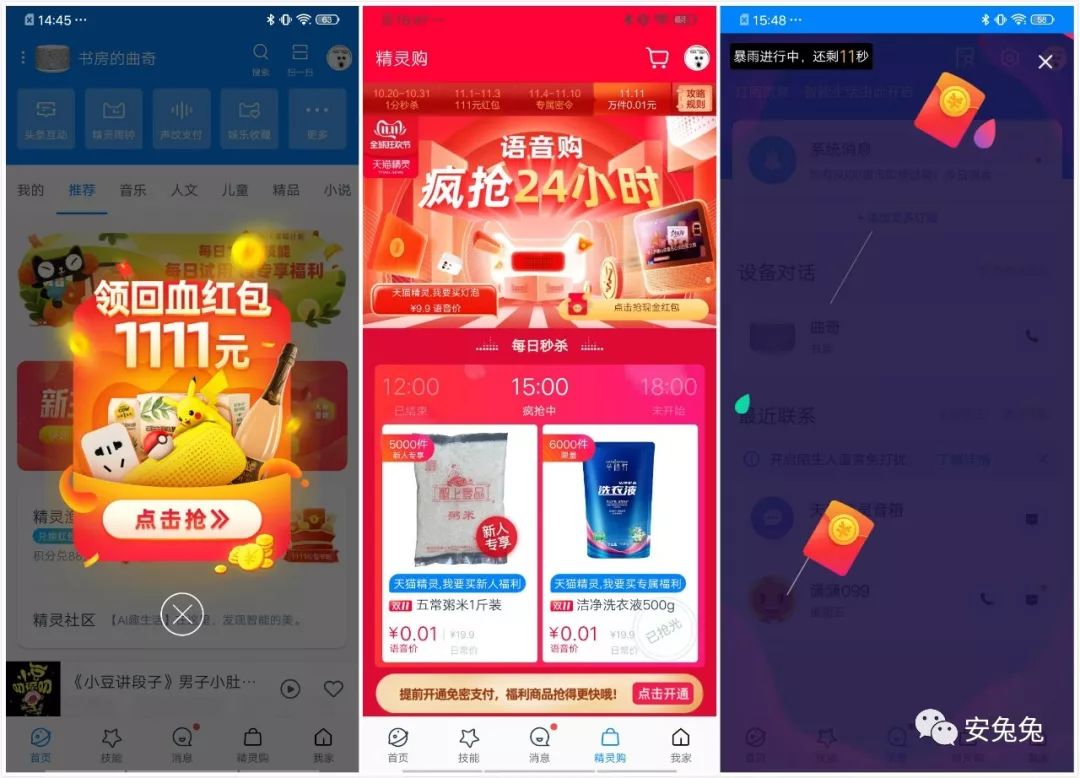
Every page reveals its e-commerce nature, especially in the shopping section, where you might see promotions for 1 kg of rice and 500 g of laundry detergent, along with occasional red envelope showers, making it feel like Double Eleven is just around the corner.
Tmall Genie also features a currency called “Meow Coins”, which can be exchanged for cash red envelopes. Thus, from start to finish, Tmall Genie constantly reminds you that you can shop using it, urging you to use it for shopping.
As Alibaba’s smart speaker series, Tmall Genie is not primarily focused on “intelligence” but rather acts as a conduit for traffic and sales for Tmall or Taobao, which, while not inherently wrong, feels misaligned with the concept of a smart speaker. It seems that Tmall Genie is emulating Amazon’s Alexa.

This may also explain why Alibaba’s smart speakers can be sold at rock-bottom prices.
4) Huawei Smart Speaker Products
Finally, let’s talk about Huawei’s smart speaker.
The Huawei AI Speaker uses the app “AI Speaker”, with the wake word “Xiao Yi Xiao Yi”, which is the only wake word among the seven evaluated that has no relation to the product name. However, this leads to a humorous result; when we asked colleagues to guess the wake word, we could confidently say: “Guess ten times, and you won’t get it!”
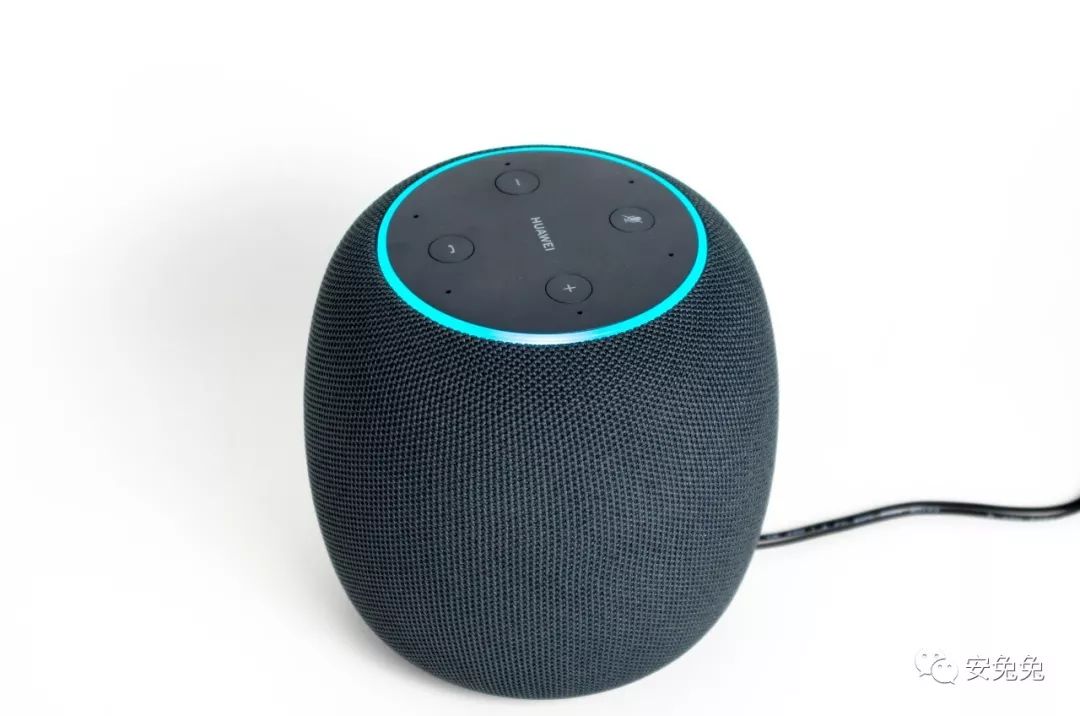
Huawei’s AI Speaker unsurprisingly has the best sound quality among the seven smart speakers, and the joint tuning with Dynaudio indeed makes its sound exceptional compared to the other six.
While it hasn’t achieved the “high treble, sweet midrange, and deep bass” tube amplifier effect yet, it is already far superior to the others. In terms of smart features, there may not be significant differences among the speakers, but Huawei focuses on sound quality, providing a notable differentiation.
Huawei’s app resembles Xiao Ai’s, featuring four pages: Home, Skills, Smart Living, and My, clearly indicating the main functions of each page.
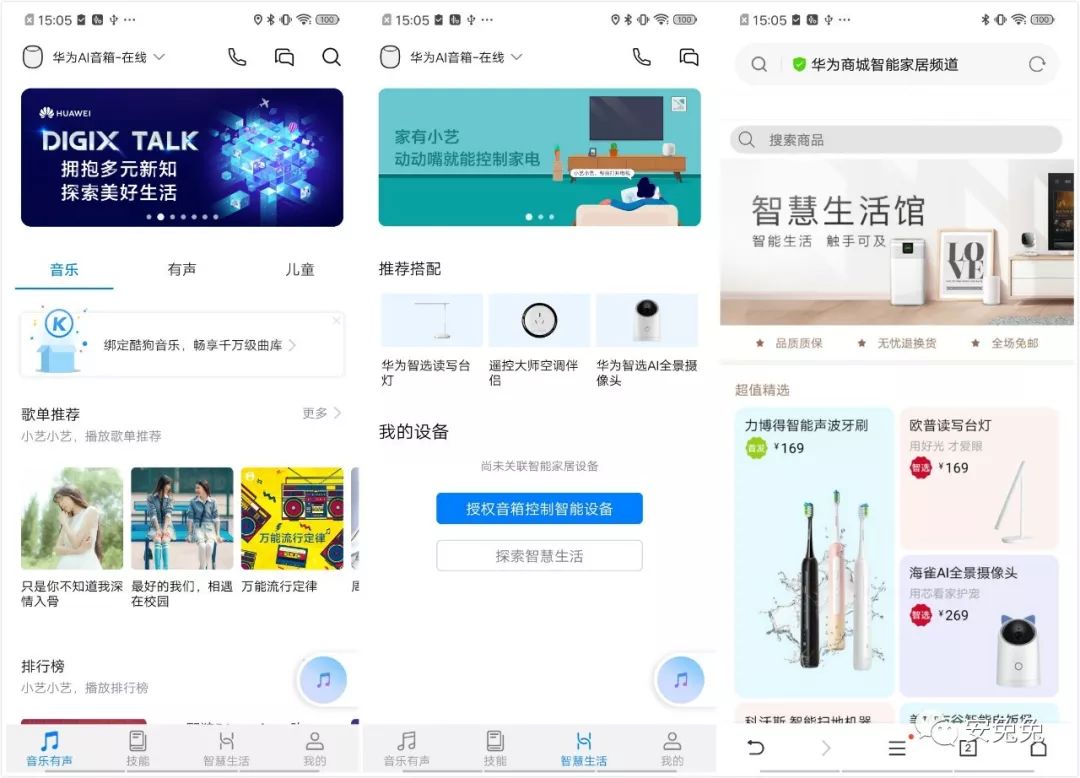
It is worth emphasizing Huawei’s Smart Living page, as Huawei’s recent phone sales have been strong, and they have not neglected smart home products. Although not as successful as their phones, when using Huawei’s smart speaker and looking to connect to certain smart devices, users will instinctively search for these products in Huawei’s marketplace due to their stability and reliability, which is currently an advantage for Huawei.
One could say that as long as Huawei’s phones sell well, there will be no worries for their smart speakers. Conversely, if smart speakers perform well, the IoT devices will naturally increase.
Huawei AI Smart Speaker operates similarly to other smart speakers, with voice activation and executing simple commands, such as playing music and checking the weather. This is the current state of smart speakers, and until there are killer or standalone applications introduced, smart speakers can only perform these basic functions, so it is still considered a beginner-level product.

Usage Experience Score Summary:

3. Smart Home Integration
If a smart speaker can only check the weather and play music, then even at a price of over 100 yuan, it’s still expensive, as these functions can be fully satisfied by a smartphone, making it unnecessary to spend money on a dedicated smart speaker.
Thus, the greatest advantage of smart speakers is their forward-looking nature, with smart home integration being one of its expansion directions.
Among the products with a more smart home focus, I believe only Xiaomi’s two models and Huawei AI Speaker align with this theme.
First, their product apps seem to cultivate user familiarity with smart speakers rather than merely promoting products; second, due to their larger smartphone user bases, they naturally attract more smart speaker users. Another hidden benefit is that accounts registered with one smartphone can seamlessly log into smart speaker products for use.
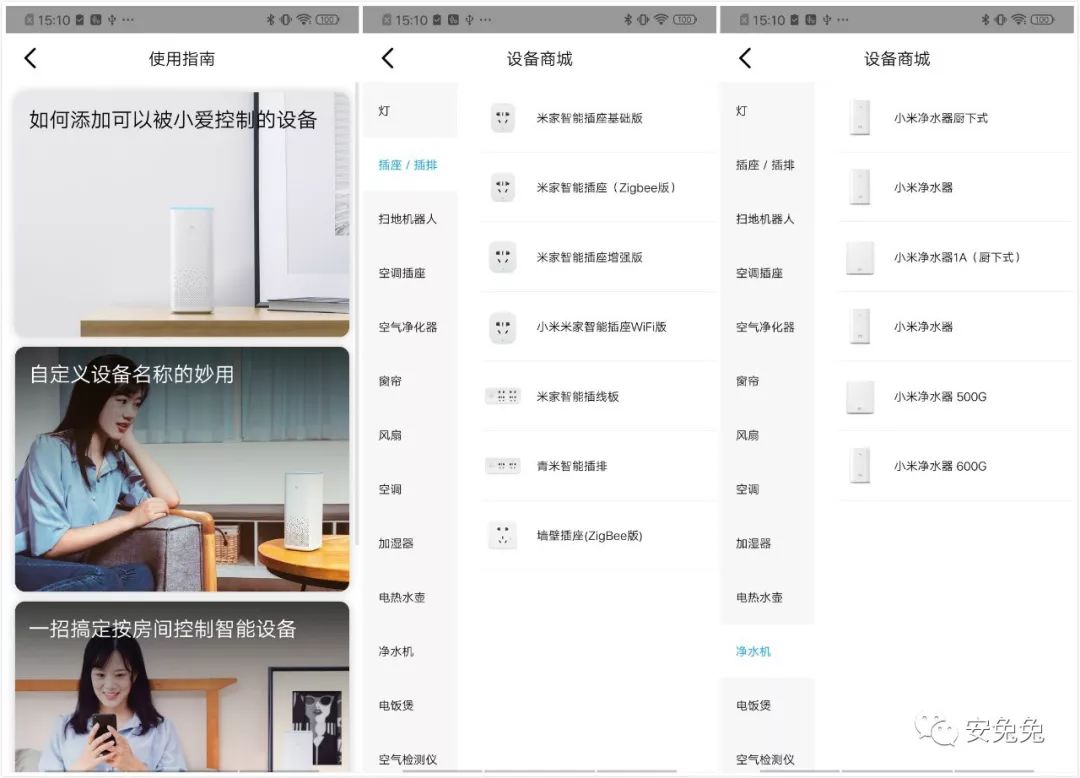

In contrast, Baidu and Tmall’s smart speaker series seem more like product promoters, as you can find their product ads or even third-party ads everywhere. As smart speakers, their essence should be to serve the user, but in this case, both companies are inserting their own ads into the mix, which feels contrary to their original purpose. Therefore, even if their prices are low, consumers may not view them as “smart” products; at best, they are just speakers that can be voice-controlled.

Establishing a smart home is definitely not something that can be achieved overnight, and even with ample cash flow, it requires time to accumulate. Products need to develop step by step, and smart devices must follow suit, with both complementing each other; as one grows stronger, so does the other.
Currently, Xiaomi is clearly leading this area, as the saying goes: “Which household doesn’t have a few Xiaomi products?”
Affordability is one aspect; more importantly, their products integrate well, and their consistent appearance effectively eliminates third-party options, leading to their market dominance.
Thus, in the direction of smart homes, Xiaomi undoubtedly holds the top position; Huawei’s AI speaker, though late to the game, has excellent craftsmanship and sound quality. Given its current position, it is not impossible for it to catch up, leveraging its smartphone advantages.

Xiaomi’s AIoT product sales performance during Double Eleven.
As for Baidu and Tmall’s products, Baidu claims to have been cultivating the AI market for years, yet the resulting products are still unsatisfactory, with occasional failures to recognize voice commands, which is hard to accept and raises doubts; Tmall’s offerings feel entirely like auxiliary products, available at low prices but lacking any forward-looking or innovative smart home experiments.
Smart Home Integration Product Score Summary:

Smart speakers are hailed as the next big trend due to their operational form, which is entirely non-physical, allowing for voice and conversational interaction, eliminating the need for “hands” in smartphones, making it more convenient and aligning with evolutionary trends; secondly, their user experience resembles the futuristic butler seen in sci-fi films, capable of solving any manual operation in the home with a single command.
While these appear to be promising directions, unfortunately, the smart speakers we currently purchase feel more like voice assistants stripped from smartphones. First, the connection process requires a smartphone intervention, and second, the commands they can execute are very simple, such as turning lights on and off, which is a binary logic of just “on or off”, meaning they can only distinguish between correct and incorrect but cannot provide constructive suggestions or assistance.
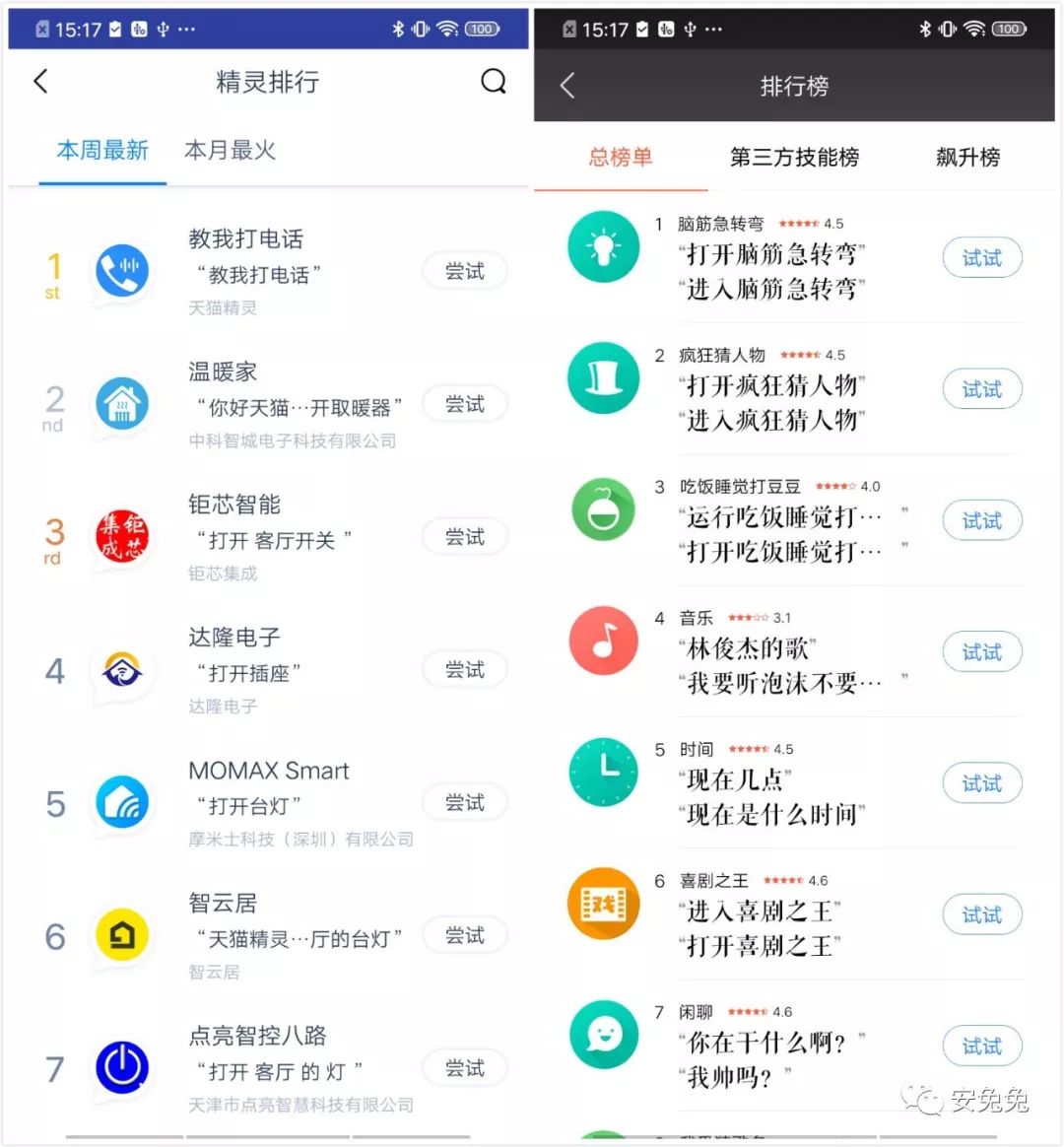
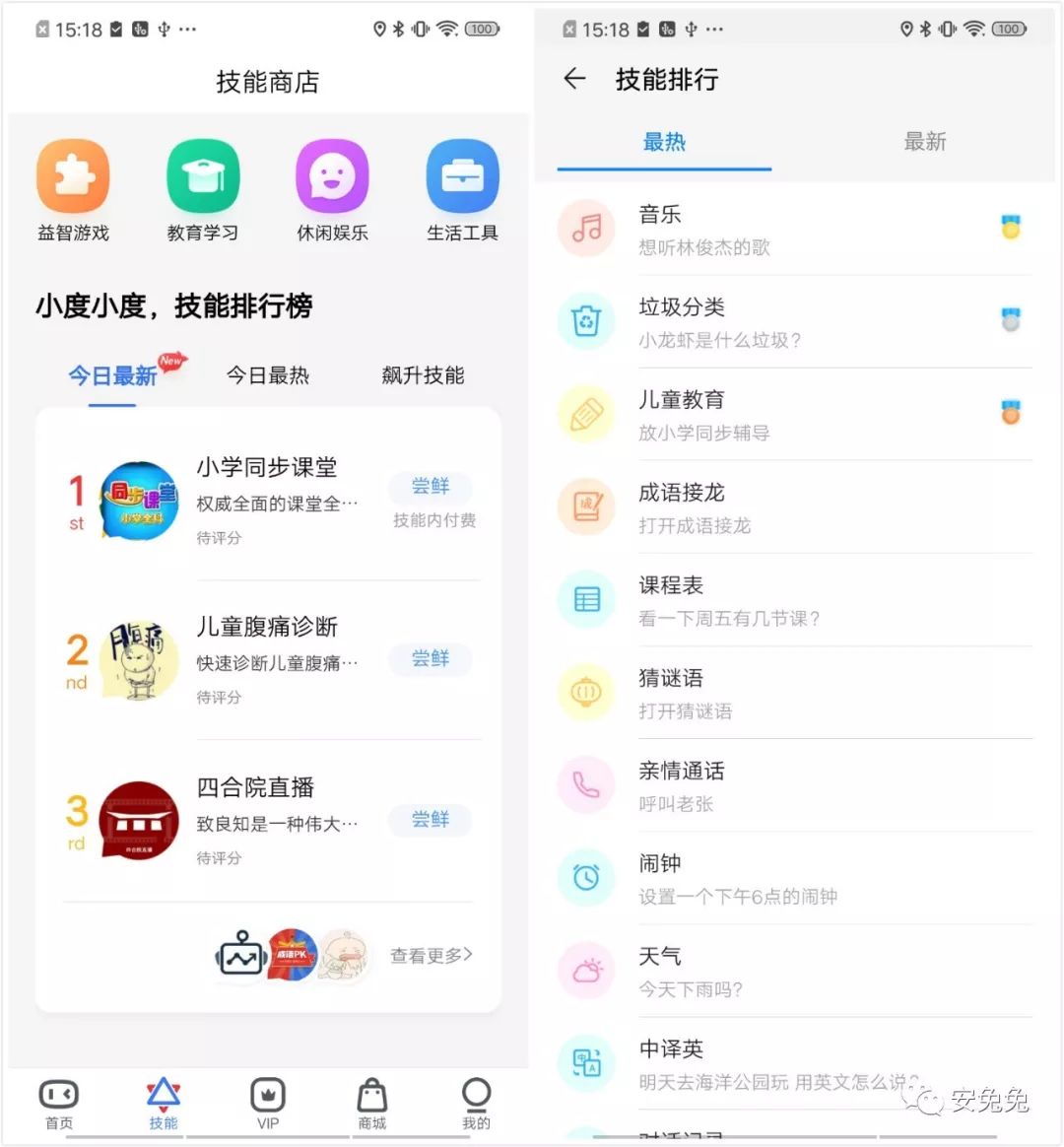
However, this is merely its initial form, as we have now fully understood its shortcomings and areas for improvement. Its development goals and positioning are clear; what remains is to wait for technological advancements to guide it down this path and continuously progress toward the desired form.
Future Evolution Direction Score Summary:

Based on the testing of these 7 smart speakers, the products that align more closely with this goal are Xiaomi and Huawei, with Xiaomi’s smart speaker series having a more forward-looking layout. Huawei is a step behind.
Tmall Genie can be seen as an extension of shopping on Taobao/Tmall, with its goal clearly not being that of a smart butler, but rather serving as another entry point for e-commerce; Baidu’s smart speaker series is the most ambiguous, with the poorest user experience.
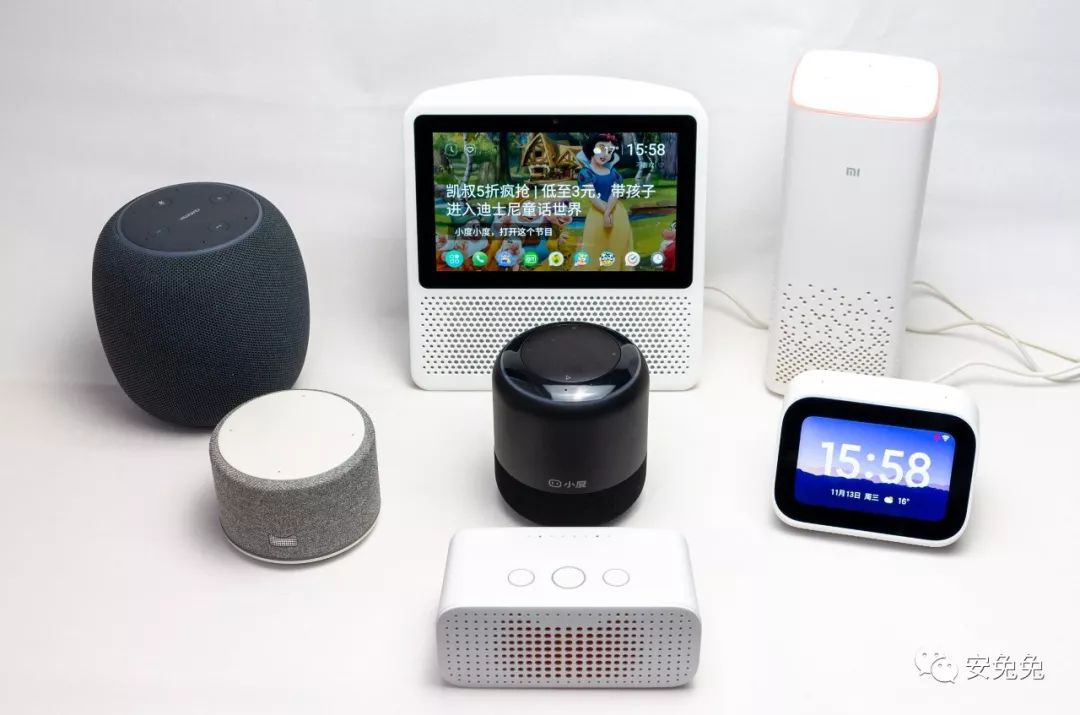
The final ranking of these 7 smart speaker products is as follows:

This concludes the evaluation of the smart speakers; we will continue to release comprehensive evaluations of other IoT devices. See you next time.
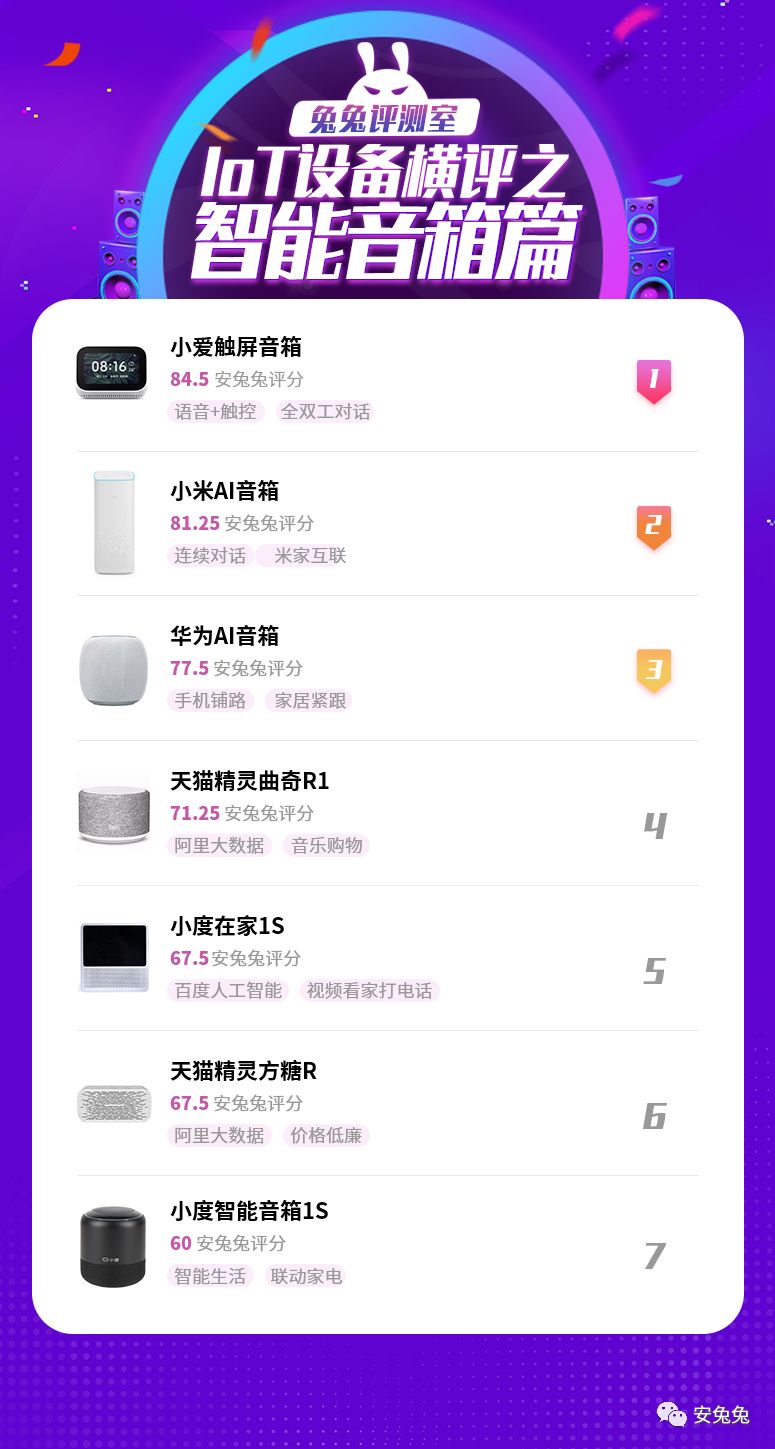
What Others Are Watching:
Investigation on the Highest Depreciation Rate Flagship Phones: As Expected, It’s Still This One That Retains Value
Who is the Best Value? Android Phone Price-Performance Ranking Released—Double Eleven Special Edition
A13 Powered! iPhone SE2 Renderings Exposed: Is This How It Looks?
Xiaomi’s Strongest Camera Phone Released: Starting at 2799 Yuan with 100 Million Pixels





























